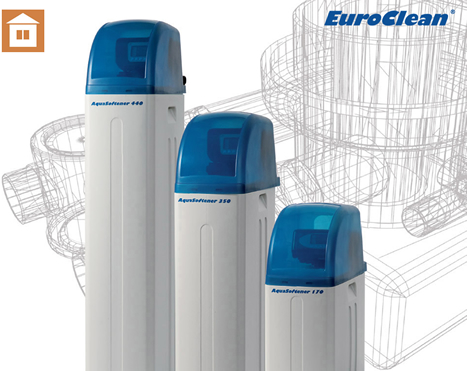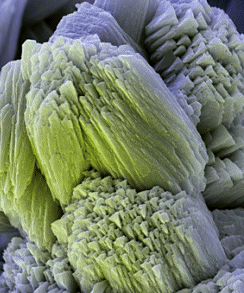 Water softening and water adjustment in households in general is already a standard part of our lives. Water softening for households is managed by two ways. First is by removing the minerals that cause water hardness, second way of softening leaves the amount of minerals the same but it changes the form of compounds in which these elements are present. Water hardness is mainly caused by calcium and magnesium.
Water softening and water adjustment in households in general is already a standard part of our lives. Water softening for households is managed by two ways. First is by removing the minerals that cause water hardness, second way of softening leaves the amount of minerals the same but it changes the form of compounds in which these elements are present. Water hardness is mainly caused by calcium and magnesium.
Principle of operation
During water flow through the converter, calcium ions (which is the reason for water hardness) are exchanged for sodium ions (which are harmless). After the passing of a particular amount of water through the converter, it is necessary to flush the entrapped calcium – this process is referred to as softener regeneration. The regeneration is carried out by means of a salty solution. For this reason, it is necessary to check and refill salt in tablets in the cabinet. The regeneration takes about 40 minutes and the converter drains the entrapped calcium together with rinse water into the drain. Then the softener automatically switches to operating mode. The whole process is therefore fully automatic; regeneration begins after the passing of a respective amount of hard water through the converter. The user only needs to refill the salt tablets once every 14 days.
A part of the softener is a mixing valve which allows the selection of the required water hardness behind the converter.
Inflict of hard water in household
A problem. The effect of hard water is calcium deposits, and furring which create white-brown deposits. Furring is deposited inside water ducts, boilers, washing machines, dishwashers, coffeemakers, mixing taps and tea kettles. It strongly diminishes their power and shortens service life. Calcium deposits on mixing taps and tiles make the cleaning of bathrooms and kitchens much harder. Hard water strongly raises the consumption of detergents and diminishes the washing effectiveness as a whole. Deposits in hot-water heaters and boilers raise the power consumption for water boiling. Bathing and washing in hard water can dry out the skin of sensitive persons and children.
Installing the AquaSoftener
It is very simple. Connect the converter to a water inlet in the household or building by disconnecting of the existing water inlet and connecting the converter to the piping. Then put the PE hose of washing water into the drain. Then plug the control valve into a common 230V electrical socket. If you need, we can install and start the device for you.
Operation cost
 The operating costs of water softening consist of the cost of salt tablets and water required for regeneration. The cost of softening 1000 liters of water is in case of AquaSoftener converter about 3 to 6 CZK depending on hardness and cost of water. The costs of electricity are minimal. It is about 100 CZK per year. Please contact us. Our dealers will make you a customized offer. They will visit you for free in case you need to check the area for installation and they will recommend the most suitable solution. You are also always welcome to visit our facility where you can have a look at the converter and consult details with our technicians. EuroClean AquaSoftener water softening is an effective and economical solution of hard water problems with a quick investment return.
The operating costs of water softening consist of the cost of salt tablets and water required for regeneration. The cost of softening 1000 liters of water is in case of AquaSoftener converter about 3 to 6 CZK depending on hardness and cost of water. The costs of electricity are minimal. It is about 100 CZK per year. Please contact us. Our dealers will make you a customized offer. They will visit you for free in case you need to check the area for installation and they will recommend the most suitable solution. You are also always welcome to visit our facility where you can have a look at the converter and consult details with our technicians. EuroClean AquaSoftener water softening is an effective and economical solution of hard water problems with a quick investment return.
Specifications
| AQUASOFTENER 170 | AQUASOFTENER 350 | AQUASOFTENER 440 | |
| Number of occupants:: | 2-3 occupants | up to 6 occupants | up to 8 occupants |
| Dimensions in cm (w/d/h): | 23/44/64 | 23/44/112 | 22,5/44/133 |
| Operation: | fully automatic | fully automatic | fully automatic |
| Regeneration control: | according to the actual flow | according to the actual flow | according to the actual flow |
| Maximum flow: | 2m3/hr. | 4,5m3/hr. | 4,5m3/hr. |
| Optimal water consumption: | 0,5 m3/day (with hardness 25°dH) | 1 m3/day (with hardness 25°dH) | 1,5 m3/day (with hardness 25°dH) |
| Maximum water pressure: | 6 bar | 6 bar | 6 bar |
| EAN: | 8595607001113 | 8595607001120 | 8595607001137 |